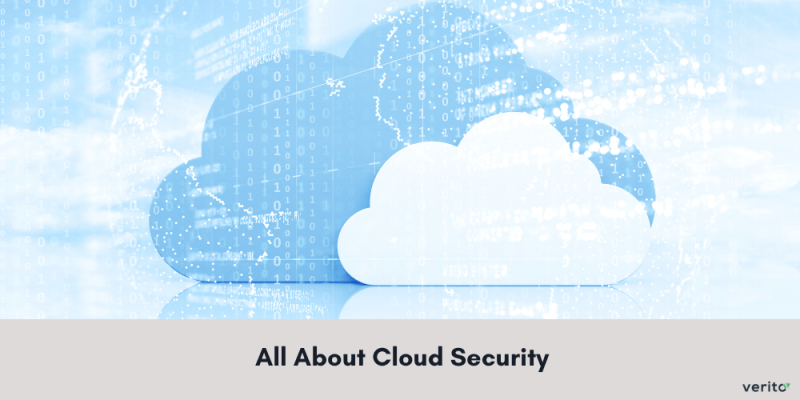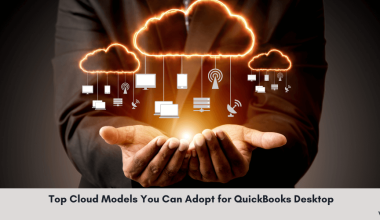In the vast expanse of cyberspace, data flows freely and businesses thrive on digital interactions. All this is majorly based on the cloud these days. Cloud computing has changed how businesses store, access, and manage information, propelling them toward higher scalability and flexibility. Yet, amidst the boundless opportunities offered by the cloud, there is a shadowy threat of cyber attacks and data breaches.
As more businesses rely on cloud computing services to drive their operations, they unwittingly expose themselves to a myriad of security risks. From unauthorized access to sensitive data to sophisticated malware infiltrations, the vulnerabilities inherent in cloud infrastructure can have devastating consequences for both enterprises and individuals alike.
In this comprehensive guide, we will cover the complexities of cloud security and why it is important.
What is Cloud Security?
Cloud security refers to the set of practices, policies, and technologies that are designed to protect data, applications, and infrastructure hosted in the cloud. These practices work against many threats, including unauthorized access, data breaches, malware infections, and insider threats, among others. To overcome these challenges, VeritGuard can help.
At its core, cloud security revolves around ensuring the confidentiality, integrity, and availability of cloud-based resources. This entails implementing robust authentication mechanisms, encryption protocols, and access controls to thwart unauthorized access attempts. Moreover, it involves deploying intrusion detection systems, firewalls, and other defensive measures to detect and mitigate cyber threats in real time.
Besides this, cloud security encompasses a wide array of compliance requirements and regulatory frameworks, particularly in industries handling sensitive information. Adhering to these standards helps mitigate legal and financial risks for customers and other stakeholders. For more information on Cloud Security read Top 7 Cybersecurity Threats You Might Not Know About
More About Cloud Security Frameworks
Dealing with the best practices and standards related to cloud security can be daunting. However, to provide guidance and establish benchmarks for IT professionals worldwide, several international frameworks have emerged as references. These include:
International Organization for Standardization (ISO)
The ISO is renowned for its international standards which provide exhaustive checklists and guidelines for establishing robust security measures. ISO standards 27017 and 27018 are of particular relevance to cloud security.
ISO 27017 offers guidance on implementing cloud security controls, while ISO 27018 specifically addresses the protection of Personally Identifiable Information (PII) in cloud environments. These standards serve as invaluable resources for organizations seeking to fortify their cloud infrastructure against a myriad of threats.
National Institute of Standards and Technology (NIST)
NIST is a US-based body with global influence. It plays a pivotal role in shaping cybersecurity standards and offers both framework checklists for establishing new systems and a wealth of resources, including articles and publications addressing specific security challenges.
The NIST Cybersecurity Framework, in particular, provides a flexible, risk-based approach to managing cybersecurity risks, making it a valuable resource for organizations navigating the complexities of cloud security.
Cloud Security Alliance (CSA)
For those seeking a more operational approach to cloud security, the Cloud Security Alliance (CSA) offers a wealth of resources and tools. CSA provides detailed questionnaires and self-assessment forms designed to aid organizations in auditing their systems and third-party vendors. These resources dive deeper into technical details to offer practical insights and actionable recommendations to enhance the security posture of cloud-based environments. For this, you must understand the concept of App Fatigue and What Makes It a Security Issue and in turn, How Does Multi-Cloud Strategy Help?
What are the Business Benefits of Ensuring Cloud Security?
Network security, or network infrastructure security, protects the systems, devices, and data that keep your network running smoothly. Read more about Network Security, for in-depth knowledge. In the cloud, it’s vital for safeguarding sensitive information, preventing breaches, and ensuring uninterrupted operations.
Zero Trust Security, additionally, is a framework that assumes no user or device is trustworthy by default, requiring continuous verification for access. In cloud environments, it’s crucial for protecting data and applications from both internal and external threats.
Ensuring robust security measures in cloud environments offers a myriad of business benefits. Let’s delve into some of the key advantages:
Sensitive Data Protection
A primary benefit of cloud security is the protection of sensitive data. Businesses can safeguard confidential information from unauthorized access, data breaches, and cyber threats by implementing encryption, access controls, and other security measures. This helps mitigate the risk of financial loss and reputational damage and ensure compliance with regulatory requirements governing data protection.
Enhanced Operational Resilience
A secure cloud infrastructure enhances operational resilience by minimizing downtime and disruptions caused by cyber attacks or data breaches. Organizations can maintain continuity of operations by proactively detecting and mitigating security threats, mitigating financial losses, and preserving customer trust.
Scalability and Flexibility
Cloud security facilitates scalability and flexibility by providing a secure foundation for expanding digital operations. Businesses can confidently scale their cloud resources to meet growing demands without compromising security or performance. Moreover, cloud security measures enable organizations to adopt hybrid or multi-cloud architectures, leveraging the flexibility of cloud computing while maintaining control over sensitive data and workloads.
Improved Cost-Efficiency
Cloud security contributes to cost-efficiency by reducing the potential financial losses associated with data breaches, compliance violations, and regulatory fines. Additionally, implementing robust security measures upfront can help avoid costly remediation efforts and reputational damage down the line, ultimately contributing to long-term cost savings and business sustainability.
How to Implement Cloud Security Measures?
Here are key steps you can consider to implement security measures:
Assess Risks and Define Security Requirements
Conduct a thorough risk assessment to identify potential security threats and vulnerabilities specific to your cloud environment. Evaluate the sensitivity of the data and workloads hosted in the cloud and the potential impact of security breaches. Based on this assessment, define clear security requirements and objectives to guide your implementation efforts.
Choose a Reliable Cloud Service Provider
Select a reputable cloud provider that prioritizes security and compliance. Evaluate the provider’s security certifications, data encryption practices, access controls, and incident response capabilities. Ensure that the CSP offers transparency and accountability regarding their security measures and negotiate Service-Level Agreements (SLAs) and OLAs that align with your security requirements.
Implement Access Controls and Identity Management
Establish robust access controls and identity management mechanisms to regulate user access to cloud resources. Utilize techniques such as Multi-Factor Authentication (MFA), role-based access control (RBAC), etc. to enforce granular access policies and prevent unauthorized access.
Encrypt Data
Implement strong cloud encryption protocols to protect data within the cloud environment. Utilize industry-standard encryption algorithms and key management practices to safeguard sensitive information.
Provide Ongoing Security Training and Awareness
Educate employees and stakeholders about cloud security best practices, policies, and procedures through comprehensive training programs and awareness campaigns. This is how you can foster a culture of security awareness and accountability by promoting good cybersecurity hygiene.














